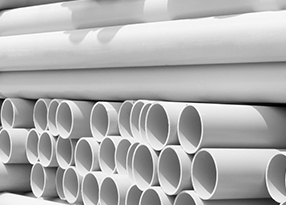horizontal feed mixers
Dec . 05, 2024 10:27 Back to list
horizontal feed mixers
Understanding Horizontal Feed Mixers A Comprehensive Overview
Horizontal feed mixers are pivotal equipment in the agricultural sector, particularly in the preparation of animal feed. These machines are designed to blend various feed ingredients evenly, ensuring that livestock receive a balanced and nutritious diet. The importance of using a horizontal feed mixer cannot be overstated, as it directly affects the health and productivity of farm animals.
What is a Horizontal Feed Mixer?
A horizontal feed mixer is a type of equipment that consists of a large, horizontally aligned mixing chamber. Inside the chamber, various feed ingredients—such as grains, vitamins, minerals, and forages—are mixed together to create a uniform feed mixture. The design typically features augers or paddles that rotate within the chamber, facilitating thorough mixing. This not only ensures consistency in the feed product but also maximizes the nutritional value for the animals consuming it.
Advantages of Horizontal Feed Mixers
One of the primary advantages of horizontal feed mixers is their efficiency. The design allows for rapid mixing times, which can significantly reduce the overall time needed for feed preparation. This is particularly important in larger operations where time management is crucial. Unlike vertical mixers, which can take longer due to their flow patterns, horizontal mixers provide a more uniform mix in a shorter amount of time.
Additionally, horizontal feed mixers boast a high capacity, making them ideal for large farms or feed manufacturing operations. They can handle large quantities of feed ingredients simultaneously, ensuring that enough feed is available for all livestock. This capacity is vital during peak feeding times or when preparing specialty feeds that require precise ingredient ratios.
Mixer Design and Functionality
horizontal feed mixers

The construction of horizontal feed mixers varies by manufacturer, but the core features remain similar. Most models include a robust frame to support the mixing chamber, which is usually made from durable materials to withstand the rigors of daily operation. Inside the mixing chamber, the augers or paddles are designed to create a gentle yet thorough mixing action that prevents ingredient segregation.
Some advanced models come equipped with electronic controls and automatic weighing systems. This technology allows for precise measurement of ingredients, promoting consistency and reducing waste. Operators can program specific recipes and ingredient proportions, ensuring that each batch of feed meets the nutritional requirements of the animals.
Maintenance and Care
To ensure the longevity and efficiency of horizontal feed mixers, regular maintenance is essential. Operators should check for wear and tear on the augers and paddles, as these components undergo significant stress during operation. Lubricating moving parts and cleaning the mixer after each use help prevent feed residue buildup, which can lead to contamination or spoilage.
Furthermore, it is vital to adhere to manufacturer guidelines regarding operational limits and usage. Overloading the mixer can lead to mechanical failures, while underutilization can reduce its efficiency in feed preparation.
Conclusion
Horizontal feed mixers play a crucial role in the agricultural industry, facilitating the efficient and effective preparation of animal feed. Their ability to deliver consistent and high-quality mixes ensures that livestock receive the nutrients they need to thrive. As technology continues to advance, the capabilities of these mixers will only improve, allowing for even greater efficiency and precision in feed production.
Investing in a quality horizontal feed mixer is a prudent decision for any livestock operation, as it directly contributes to the health of animals and, ultimately, the success of the farm. By understanding the importance and functionality of these mixers, farmers can make informed choices that enhance their feed management processes and lead to a more sustainable agricultural practice.
-
Hot Sale 24 & 18 Door Rabbit Cages - Premium Breeding Solutions
NewsJul.25,2025
-
Automatic Feeding Line System Pan Feeder Nipple Drinker - Anping County Yize Metal Products Co., Ltd.
NewsJul.21,2025
-
Automatic Feeding Line System Pan Feeder Nipple Drinker - Anping County Yize Metal Products Co., Ltd.
NewsJul.21,2025
-
Automatic Feeding Line System - Anping Yize | Precision & Nipple
NewsJul.21,2025
-
Automatic Feeding Line System - Anping Yize | Precision & Nipple
NewsJul.21,2025
-
Automatic Feeding Line System-Anping County Yize Metal Products Co., Ltd.|Efficient Feed Distribution&Customized Animal Farming Solutions
NewsJul.21,2025






